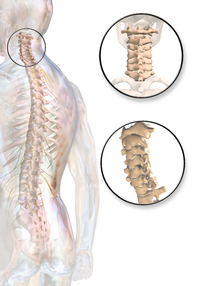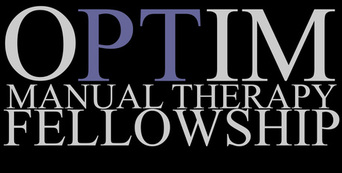- Home
- About Us
- TSPT Academy
- Online Courses
-
Resources
- Newsletter
- Business Minded Sports Physio Podcast
- Day in the Life of a Sports PT
- Residency Corner
-
Special Tests
>
-
Cervical Spine
>
- Alar Ligament Test
- Bakody's Sign
- Cervical Distraction Test
- Cervical Rotation Lateral Flexion Test
- Craniocervical Flexion Test (CCFT)
- Deep Neck Flexor Endurance Test
- Posterior-Anterior Segmental Mobility
- Segmental Mobility
- Sharp-Purser Test
- Spurling's Maneuver
- Transverse Ligament Test
- ULNT - Median
- ULNT - Radial
- ULNT - Ulnar
- Vertebral Artery Test
- Thoracic Spine >
-
Lumbar Spine/Sacroiliac Joint
>
- Active Sit-Up Test
- Alternate Gillet Test
- Crossed Straight Leg Raise Test
- Extensor Endurance Test
- FABER Test
- Fortin's Sign
- Gaenslen Test
- Gillet Test
- Gower's Sign
- Lumbar Quadrant Test
- POSH Test
- Posteroanterior Mobility
- Prone Knee Bend Test
- Prone Instability Test
- Resisted Abduction Test
- Sacral Clearing Test
- Seated Forward Flexion Test
- SIJ Compression/Distraction Test
- Slump Test
- Sphinx Test
- Spine Rotators & Multifidus Test
- Squish Test
- Standing Forward Flexion Test
- Straight Leg Raise Test
- Supine to Long Sit Test
-
Shoulder
>
- Active Compression Test
- Anterior Apprehension
- Biceps Load Test II
- Drop Arm Sign
- External Rotation Lag Sign
- Hawkins-Kennedy Impingement Sign
- Horizontal Adduction Test
- Internal Rotation Lag Sign
- Jobe Test
- Ludington's Test
- Neer Test
- Painful Arc Sign
- Pronated Load Test
- Resisted Supination External Rotation Test
- Speed's Test
- Posterior Apprehension
- Sulcus Sign
- Thoracic Outlet Tests >
- Yergason's Test
- Elbow >
- Wrist/Hand >
- Hip >
- Knee >
- Foot/Ankle >
-
Cervical Spine
>
- I want Financial Freedom
- I want Professional Growth
- I want Clinical Mastery
 Joint mobilization and manipulation is an excellent tool for improving mobility and pain for patients. The effects also can include increased muscle function, improved sensation and more. One of the issues that can be seen, however, is that patients may come back repeatedly with the same joint restrictions, requiring continued manual work. This is where it’s important that we follow up our manual techniques with some sort of exercise to lock in the changes. I typically use a form of repeated motions to maintain and often increase joint restrictions. A common area of impairment and restricted mobility is the CT junction. On our Insider Access Page, we have reviewed quite a few manual techniques for increasing CT junction mobility, but maintaining those mobility improvements is especially difficult due to common postural faults. As you likely have seen in the clinic, people tend to sit with a forward head posture frequently which results in prolonged time spine spine in the upper thoracic flexion. When the extension mobility is not used, the patient tends to become increasingly stiff in that region. In the past, I have given repeated cervical retraction with extension to focus the motion at the CT junction, when symptoms and restrictions are bilateral or central. When symptoms are unilateral, I’ll check cervical retraction (full retraction!) with sidebend and look for a passive and active asymmetry. The patient then can do repeated cervical retraction with SB for repeated loading. When used properly, the exercise is extremely effective, however, I often find patients have a difficult time maintaining full retraction during the exercise. As a result, they fail to mobilize the lower cervical spine. Recently I have been using a modification for self mobilization of the CT region. The lower cervical spine and thoracic spine have ipsilateral coupling. This means that sidebending and rotation occur at the same side with loading due to facet alignment. This can be utilized during mobilization by rotating to the restricted side fully and then sidebending ipsilaterally. I have found this technique is very effective in increasing CT junction mobility and patients are less likely to perform the technique incorrectly. Check out the video below for an exact demonstration of the technique. -Chris
Like this post? Then check out the Insider Access Page for advanced content! And check out similar posts below!
6 Comments
10/21/2015 08:56:33 am
Hey Chris, Thanks for this post. If a patient has equal cervical side bending and rotation to the L & R but definitive L sided pain with radicular symptoms down the L UE, to which direction would you suggest they rotate/side bend? Do you find a consistent pattern as far as rotating/side bending towards or away from the side of pain or is trial and error necessary while monitoring symptom response to determine the correct motion?
Reply
Hi Lindsy,
Reply
Glenn
10/21/2015 01:43:15 pm
My neuro professor said there has been no evidence through research conducted regarding spinal manipulations and their influence on the nervous system.
Reply
Hi Glenn,
Reply
Leave a Reply. |
Dr. Brian Schwabe's NEW Book in partner with PaleoHacks!
Learn residency-level content on our
Insider Access pages We value quality PT education & CEU's. Click the MedBridge logo below for TSPT savings!Archives
July 2019
Categories
All
|









 RSS Feed
RSS Feed